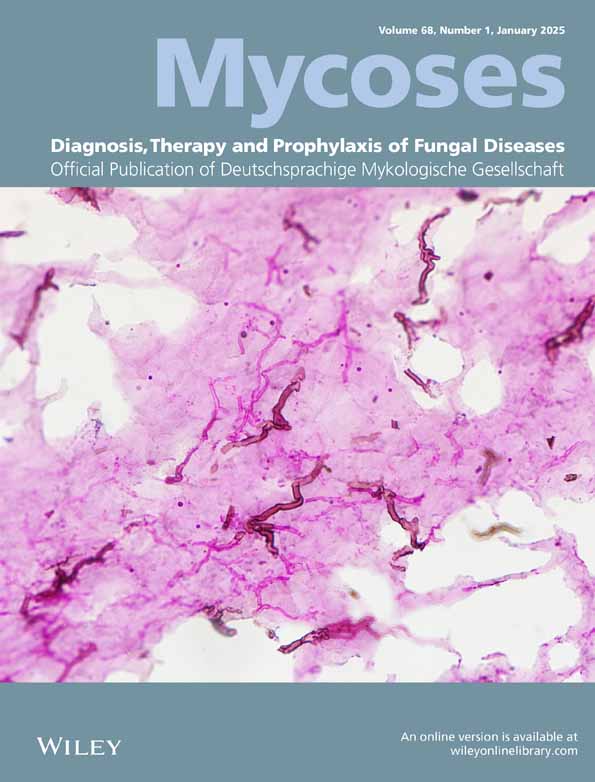Terbinafine Resistance in Trichophyton Species From Patients With Recalcitrant Infections Detected by the EUCAST Broth Microdilution Method and DermaGenius Resistance Multiplex PCR Kit
Funding: The authors received no specific funding for this work.
ABSTRACT
Background
Emerging terbinafine resistance in Trichophyton species has been reported globally. The prevalence in clinical samples from patients with treatment failure is unknown in Denmark.
Objectives
Prospective study of terbinafine resistance in Trichophyton isolates from patients with recalcitrant skin or nail infections.
Patients/Methods
Clinical samples (nails or skin scrapings) from patients with recalcitrant infections were included. Isolates were tested with the EUCAST broth microdilution method, E.Def 11.0 and DermaGenius Resistance Multiplex PCR kit (PathoNostics, The Netherlands).
Results
Thirty-three isolates were included in the study, 27 (81.8%) T. rubrum, 2 (6.1%) T. interdigitale, 1 (3.0%) T. mentagrophytes and 3 (9.1%) T. indotineae. Sixteen of 31 isolates (52%) were terbinafine resistant with the EUCAST broth microdilution method, 13 T. rubrum and 3 T. indotineae. Two isolates did not grow in the broth culture medium. The DermaGenius Resistance Multiplex PCR kit showed mutations associated with terbinafine resistance in 11 isolates. All of the 11 isolates with detected mutations by PCR also displayed terbinafine resistance by the EUCAST method.
Conclusions
Terbinafine resistance was detected in 52% of Trichophyton isolates from recalcitrant infections by the EUCAST broth microdilution. T. rubrum was the most common species among the resistant isolates (81.3%). The DermaGenius Resistance Multiplex PCR kit was a reliable tool for the detection of mutations associated with terbinafine resistance and is suitable as an initial screening for terbinafine resistance before results from EUCAST broth microdilution testing is available. Susceptibility testing of Trichophyton spp. from skin and nail samples is highly relevant from patients with terbinafine treatment failure.
Conflicts of Interest
P.K.S., L.D. and L.K.: none. K.M.T.A.: Gilead: speaker honoraria. J.B.G.: Board member NSMM (unpaid) and travel grants from Gilead and ADVANZ PHARMA.




